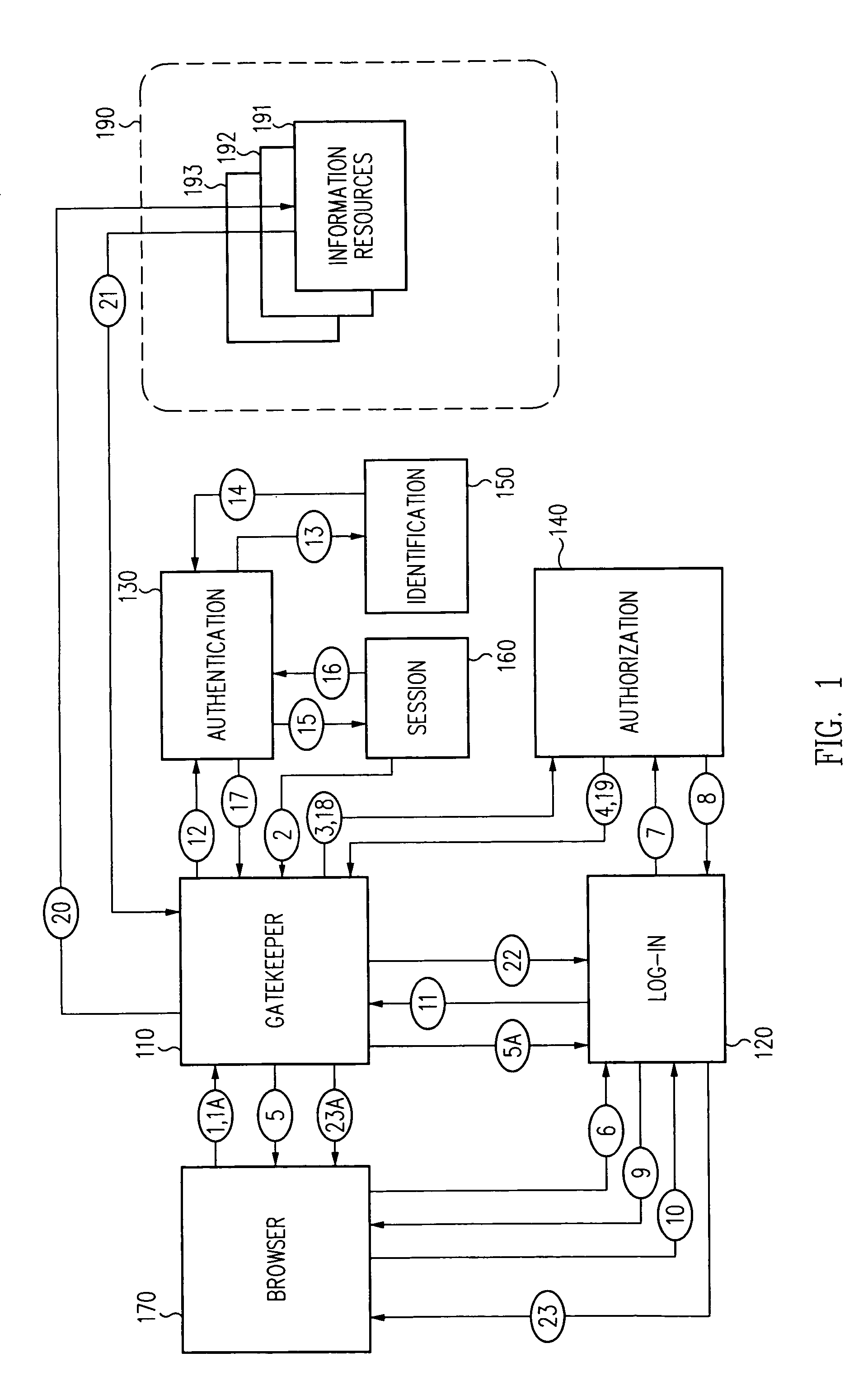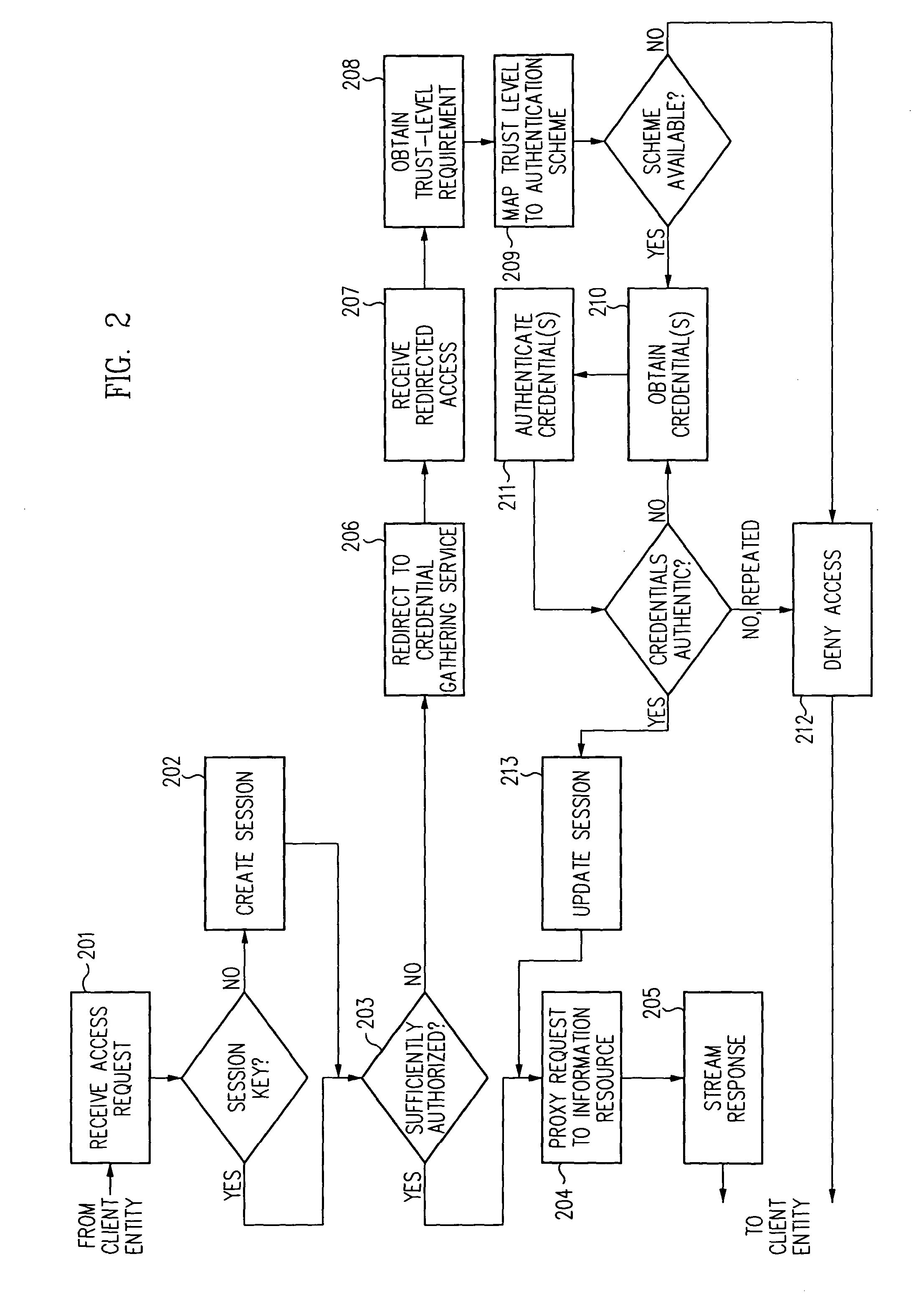Log-on service providing credential level change without loss of session continuity
a credential level change and credential technology, applied in the field of information security, can solve the problems of affecting the corporate image, limiting the risk of non-proprietary information, and putting information and resources outside the firewall at risk
- Summary
- Abstract
- Description
- Claims
- Application Information
AI Technical Summary
Benefits of technology
Problems solved by technology
Method used
Image
Examples
Embodiment Construction
)
[0023] Some terminology used in this specification has meaning particular to the context of embodiments described herein. Therefore, to aid persons of ordinary skill in the art in understanding the full scope of the invention, some of that terminology is now defined.
[0024] Glossary
[0025] Access Management: Systems, methods and techniques for controlling use of information resources. Typically, access management systems employ both authentication and authorization to control access to information resources.
[0026] Authentication: A process used to verify the identity of an entity. As typically implemented, an authentication method is employed to verify the identity of a user or object based on a credential supplied by the user or object.
[0027] Authorization: A process for determining whether an identity is permitted to perform some action, such as accessing a resource. Typically, an identity will be authenticated, though in some configurations certain identities need not be.
[0028] Cr...
PUM
 Login to View More
Login to View More Abstract
Description
Claims
Application Information
 Login to View More
Login to View More - R&D
- Intellectual Property
- Life Sciences
- Materials
- Tech Scout
- Unparalleled Data Quality
- Higher Quality Content
- 60% Fewer Hallucinations
Browse by: Latest US Patents, China's latest patents, Technical Efficacy Thesaurus, Application Domain, Technology Topic, Popular Technical Reports.
© 2025 PatSnap. All rights reserved.Legal|Privacy policy|Modern Slavery Act Transparency Statement|Sitemap|About US| Contact US: help@patsnap.com



